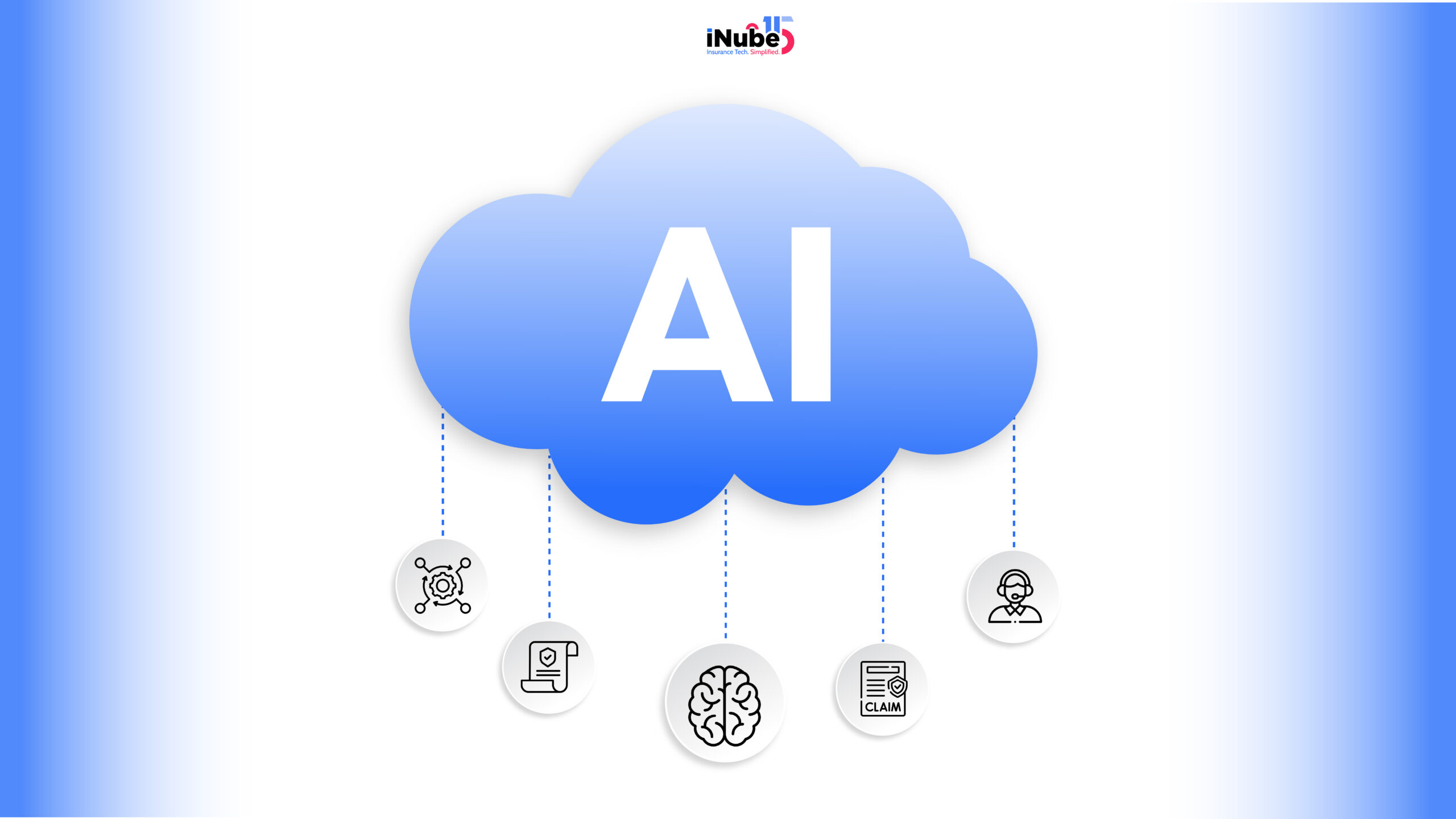Imagine this, a customer files a claim at 2 AM and AI analyzes it in lightning speed- from photos to payment approvals, all these done in the blink of an eye and before sunrise. No claim adjuster needed, and no prolonged wait times.
However, if this had been another insurance company that isn’t AI-savvy, then the situation would have been completely different. This gap is not just about technology- but about survival. The insurance companies that are using AI cloud platforms will not just be working faster, but they will be playing an entirely different game.
Keep reading to decode more.
A Quick Glance at the AI Growth
The AI in insurance is far beyond being a trend; rather, it’s about understanding the necessity of it in operations. In fact, the momentum is quite high as the global AI in insurance market is projected to be valued at $10.82 billion in 2025, and is projected to surge to $141.44 billion by 2034, representing a compound annual growth rate of 33.06%. This growth is not speculative growth; rather, it’s about going ahead with a strategic imperative.
This scale of transformation is becoming even clearer by examining the implementation rates. In a recent Deloitte survey, 76% of the insurance executives have already implemented Gen-AI in their operations, reflecting the significant growth trend that AI in insurance has witnessed. In another research by PwC, 70% of insurance leaders believe that Gen-AI will be significantly changing how their companies create, deliver, and capture value. What makes this transformation even more interesting is the prioritization of the cloud infrastructure as the foundation for AI deployment. Well, the message is quite clear here- the insurance companies need to understand that AI capabilities will depend fundamentally upon robust cloud platforms.
Why Cloud Platforms are the Enabler, Not Just Infrastructure?
The traditional insurance technology stacks are not designed for the high-end computational demands of modern AI. The legacy systems essentially struggle with the data velocity, volume, and variety that are required for effective machine learning models. The cloud platforms essentially solve this architectural bottleneck by providing:
- Elastic scalability will allow the insurance companies to process massive datasets during peak periods.
- Access to Prebuilt AI services from the major cloud providers for democratizing the capabilities that were previously available only to the largest insurers with dedicated data science teams.
- Real-time Data Integration capabilities allow insurers to incorporate IoT device data, telematics, weather patterns, and social signals into the risk assessment models. The experts have estimated that there will be up to one trillion connected devices by the end of 2025, and this will create an unprecedented data stream for insurers.
- Collaborative ecosystems, which will help the insurers to partner with Insurtech startups, reinsurers, as well as third-party providers via API-driven architectures, which would be prohibitively complex in legacy environments.
This insurance digital transformation is not just about moving beyond the existing processes to the cloud- it’s about reimagining what is possible when the computational constraints disappear.
Glimpse from Experiments to Core Operations
The maturation of AI in insurance reveals itself in the way applications have evolved from experimental projects to mission-critical operations. The leading insurers are essentially deploying AI across the entire insurance value chain:
Claims Transformation
The claims processing step, which is historically one of the most labor-intensive functions, is being fundamentally redesigned through computer vision, natural language processing, and predictive analytics. A recent study by McKinsey has highlighted one of the transformative case studies where one of the leading insurance companies has deployed over 80 AI models in claims transformation and has reduced the complex liability assessment time by 23 days, which has significantly cut the complaints by 65% and has saved over £60 million in 2024 alone.
Underwriting Intelligence
This is another one of the critical areas where AI has been helping insurers to shape up their operational efficiency. These AI-powered underwriting systems will be analyzing thousands of data points in seconds, which will enable straight-through processing for low-risk policies while flagging the complex cases for human review. This AI-powered insurance underwriting market alone is expected to reach $674.1 billion by 2034, growing at 44% annually. These are the systems that are not just capable of replicating human decision-making but are also identifying the risk patterns that are invisible to the traditional actuarial models.
Fraud Detection and Prevention
AI has significantly played a role in fraud detection in a complex operational environment such as that of Cyber Insurance. The AI systems are capable of identifying the fraudulent claims, synthetic identities, and coordinating fraud rings with accuracy rates that will far exceed rules-based systems.
What Leaders Should Consider- The Strategic Imperative for the Future of Insurance
To stay ahead, insurance leaders need to consider their existing organization’s AI and cloud strategy. These are the considerations that they need to keep in mind:
Balancing Innovation with Risk Management
The insurance industry is a heavily regulated industry where AI decisions will affect people’s coverage and claims. The stakes are quite high, and a recent survey from Deloitte has highlighted that only 45% of the insurance leaders believe that the benefits of Gen-AI will outweigh the costs, or are uncertain about their value proposition.
Start with Data Architecture
Your AI capabilities will only be as good as your data foundation. This is the insight from the industry leaders, which isn’t theoretical, and recent research has also found that among the most unsuccessful AI implementations, poor data and AI foundations have been ranked as a top reason for failure, while the successful implementations have cited having a strong data foundation as the biggest success factor.
Building Capabilities Incrementally
The most successful AI implementation essentially follows a crawl-walk-in approach. A recent study by Deloitte has confirmed this approach. While some of the insurers have deployed Gen-AI across various functions, the largest cluster still remains in the scoping stage. After the initial experiments with proofs of concept, the insurers will be taking a more measured approach to the scaling and adoption.
The Action that Lies Ahead
For the insurance leaders, the strategic question does not lie in whether AI and cloud platforms will be transforming the insurance industry, because they already are. Instead, the question is whether your organization will be leading this transformation or be disrupted by it.

Archismita Mukherjee
Insurance Content Analyst


